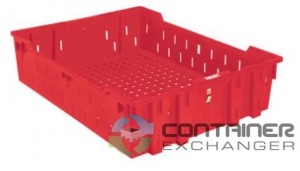For bakery businesses looking for a cheap, efficient, and effective way to transport their baked goods to clients, look no further than bakery trays. Bakery trays, which are usually constructed out of lightweight plastic, are easy to carry and are incredibly durable. And, because these open-top containers are stackable, bakery trays are also frequently used by food manufacturers, where a consistent organizational system is necessary.

Other characteristics found in bakery trays include: A nestable design that allows baking companies to save room during delivery or when the trays are not in use. More specifically, this nestable orientation saves over ½ the space of non-nested containers.
Bakery totes are also smooth to the touch, which eliminates the possibility of plastic bakery bags snagging on a tray’s rough edges or corners.
These straight-walled containers also have dividers that help protect baked goods and keep them organized. On the bottom of each tote, there is reinforced footing that maximizes stability when the trays are stacked on top of each other.Bakery trays are constructed out of HDPE plastic, which is a very strong form of plastic that will last for several years. Because the trays are so durable, they offer companies significant cost savings over traditional cardboard boxes. Most importantly, though, the plastic used in bakery totes meets all FDA standards, making the material safe to use around food.
These bakery totes do not require lids because of their nested design. Besides plastic, these totes are also constructed of wire mesh or fiberglass. To learn more about bakery trays, click here.